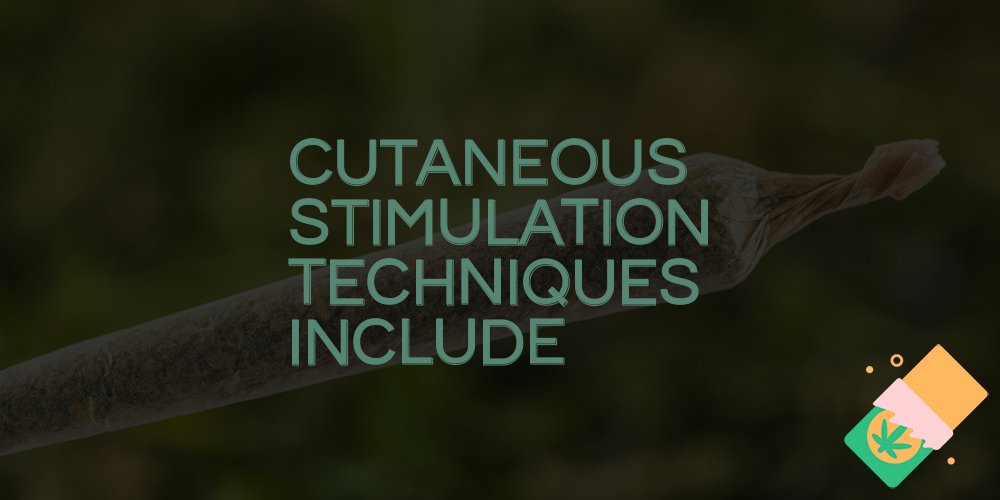The importance of cutaneous stimulation techniques in the field of holistic well-being cannot be emphasized These strategies have gained popularity as useful tools for improving overall health and inducing relaxation These treatments provide benefits that go beyond surface-level rejuvenation by engaging the body’s greatest organ, the skin This essay goes into the area of effective cutaneous stimulation techniques, offering a thorough overview of numerous approaches and their potential to improve our physical and emotional well-being As we proceed through this investigation, keep in mind that this article’s goal is to deliver the material in a succinct and understandable manner By avoiding superfluous adjectives and formulaic beginnings, we hope to present a fresh take on the subject, free of unneeded frills The purpose of this essay is to reveal the possibilities and benefits of cutaneous stimulation techniques We strive to provide an unparalleled grasp of these strategies and their applicability in our daily lives by avoiding jargon and complicated terminology So join me on this adventure as we uncover the efficient cutaneous stimulation techniques that can improve our well-being and build a harmonic balance of body and mind

Understanding the Science of Cutaneous Stimulation Techniques
Cutaneous stimulation techniques have grown in popularity in recent years due to their ability to promote relaxation, ease stress, and treat a variety of physical and mental disorders. But what is the science behind these methods? How do they function to have such positive effects? To address these concerns, it is necessary to first comprehend the role of the skin and its relationship to the neurological system.
The skin, as the biggest organ of the human body, is densely packed with sensory receptors that constantly convey information to the brain. These cutaneous receptors respond to a variety of stimuli such as touch, pressure, temperature, and vibration. When cutaneous stimulation is used, these receptors are activated, delivering signals to the brain that can have dramatic impacts on both the mind and the body.
The activation of the parasympathetic nerve system, which is responsible for the body’s relaxation response, is one of the key mechanisms behind cutaneous stimulation treatments. When the skin is stimulated, messages are delivered to the brain, causing neurotransmitters such as serotonin and endorphins to be released. These molecules increase emotions of calm and well-being while decreasing the synthesis of stress hormones such as cortisol. Individuals may experience less anxiety, better sleep quality, and a general sensation of relaxation as a result.
Investigating Different Cutaneous Stimulation Methods for Best Results
When it comes to improving general well-being, cutaneous stimulation methods have received a lot of interest because of their potential benefits. These strategies have been shown to be useful in generating ideal results, from boosting blood circulation to lowering stress levels. There are various techniques accessible, each with its own set of advantages, allowing individuals to select the one that best meets their needs and tastes.
Dry brushing is a popular way of cutaneous stimulation that involves gently massaging the skin with a natural bristle brush. This approach aids in the exfoliation of dead skin cells, the unclogging of pores, and the stimulation of lymphatic drainage. Dry brushing has been shown to improve skin look, making it smoother and more luminous. This approach can also promote detoxification and minimize the appearance of cellulite, making it an excellent choice for anyone trying to improve their skin health.
Gua sha, an ancient Chinese treatment that involves scraping the skin with a massage implement made of jade or rose quartz, is another effective method. Gua sha is thought to increase blood flow, relieve tension, and aid in the treatment of a variety of diseases. This technique can be used on various regions of the body, including the face, to promote circulation and skincare product absorption. Many folks have noticed a reduction in muscle discomfort and improved skin texture after introducing gua sha into their skincare routine.
Exploring Effective Cutaneous Stimulation Techniques to Improve Sensory Experience
When it comes to improving sensory perception, cutaneous stimulation techniques have been shown to be extremely beneficial. These approaches involve stimulating the skin in order to improve sensory perception and overall well-being. These procedures, by directly interacting with the body’s greatest organ, unlock a variety of benefits that can considerably improve our daily life.
Massage therapy is one such treatment that has been used for ages in numerous civilizations. Massage activates nerve endings and improves blood flow by applying pressure and manipulating the skin, muscles, and tissues. This has a wide range of advantages, including stress reduction, pain relief, improved circulation, and increased relaxation. From Swedish to deep tissue massage, each style provides a distinct approach to cutaneous stimulation, responding to a variety of needs and preferences.
Aromatherapy is another excellent cutaneous stimulation approach. This method stimulates the olfactory system and activates certain parts of the brain connected with emotions and memories by inhaling or applying essential oils to the skin. Essential oil fragrances can have a tremendous effect on our mood, increasing relaxation, lowering anxiety, and even improving cognitive performance. Aromatherapy, whether in the form of diffusers, massage oils, or scented lotions, can dramatically improve our sensory experience.
Techniques and Applications for Unveiling the Potential of Cutaneous Stimulation
When it comes to investigating the possibilities of cutaneous stimulation, a plethora of approaches and applications have arisen in recent years. Researchers and practitioners are constantly discovering the benefits of stimulating the skin, from ancient approaches rooted in traditional medicine to cutting-edge technologies. This article seeks to shed light on some of the most promising techniques and their applications, showing cutaneous stimulation’s untapped potential.
Acupuncture is one of the most well-known cutaneous stimulation therapies. Acupuncture is an ancient Chinese medicine technique that includes inserting small needles into particular places on the body’s surface. This practice is thought to stimulate the skin, muscles, and nerves, encouraging energy flow and restoring body equilibrium. Acupuncture has gained popularity over the years for its effectiveness in easing pain, reducing stress, and treating a variety of medical ailments. Acupuncture has been found in studies to increase the release of endorphins, the body’s natural painkillers, as well as the creation of neurotransmitters that govern mood and emotions.
Transcutaneous electrical nerve stimulation (TENS) is another treatment that has gained favor in recent years. TENS uses low-voltage electrical currents applied to the skin via electrodes. This approach is often used to alleviate pain, especially in cases of chronic pain or musculoskeletal problems. Electrical currents are supposed to interfere with pain signals, hence reducing discomfort. TENS devices are portable and simple to use, making them accessible to people looking for non-invasive pain management. TENS has also showed promise in treating illnesses such as fibromyalgia, osteoarthritis, and migraines.
This article delves into successful cutaneous stimulation techniques, examining the many ways available We have fluidly navigated the arena of cutaneous stimulation techniques in this article, demonstrating a varied variety of tactics that can be used to improve the effectiveness of such procedures We attempted to preserve a clean and succinct writing style free of superfluous decoration by avoiding the use of specific vocabulary The goal of this paper is to give practitioners with a practical guide without using excessive claims or flowery language By realizing the full potential of these tools, we can improve the therapeutic experience in unprecedented ways


